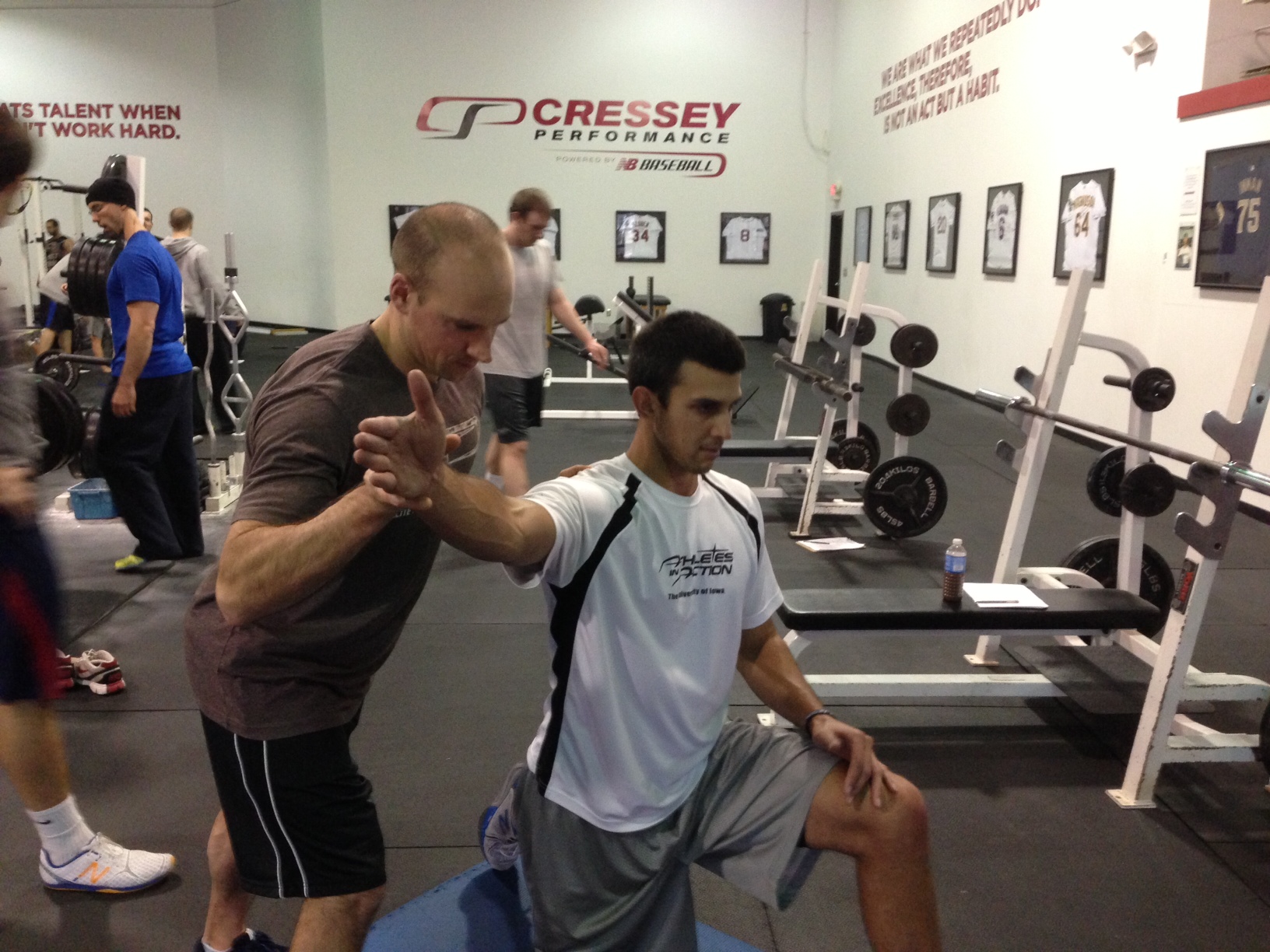I always tell up-and-comers in the strength and conditioning field, "If you aren't assessing, you're just guessing." It's not as simple as just doing a sit-and-reach test and having someone hop on the scale for you, though. This series is devoted to highlighting some of the most commonly overlooked components of the assessment process - and here are three more evaluations you might be missing:
1. Previous Athletic/Training Workload - If you're trying to help a client get to where they want to be, it's important to realize where they've been. For example, someone who has a history of overworking themselves might respond really well to a lower volume program. Or, an athlete looking to gain muscle mass who has never trained with much lifting volume might be well-served to add some "backoff" sets and additional assistance work.
This is an incredibly important discussion with our professional pitchers, too. Starting pitchers who have a high workload (some in excess of 200 innings pitched in the previous 8-9 months) need to wait longer to start throwing than relief pitchers who may not have thrown more than 40 innings in a season. The former group might not start an off-season throwing program until January 1, whereas the latter group might already have eight weeks of work in by that point.

Discussions of building work capacity get a lot of love in the strength and conditioning field, but I think we often lose sight of the fact that sporting coaches are also looking to build work capacity in the context of the athletes' actual sports. Now, these two things don't have to be mutually exclusive, but if everyone is always pushing high volume all the time, things can go downhill fast.
2. Quad and Adductor Length - Let's face it: a huge chunk of the population doesn't exercise enough, and even most of those who do exercise regularly don't pay attention to mobility needs. As a result, their entire exercise program takes place in a very small amplitude; they never get through significent joint ranges of motion. Two areas in which you see this probably rearing its ugly head the most are quad and adductor length.
Your quads are maximally lengthened when your heel is on your butt. How often do you see someone encounter this position in their daily lives?

Adductors are stretched when the hips are abducted. When was the last time you hit this pose in your daily activities - outside of a fall on the ice?

If you want to do a quick and easy assessment of where you stand on these, try these two (borrowed from Assess and Correct):
Prone Knee Flexion: you should have at least 120 degrees of active knee flexion without the pelvis or lower back moving.

Supine Abduction: you should have at least 45 degrees of abduction without lumbar or pelvis compensation, or any hip rotation.

I generally just check these up on the training table when people get started up, but these should provide good do-it-yourself options for my readers who aren't fitness professionals. Also, if you find that you come up short on these tests, get to work on the two stretches pictures at the start of this bulletpoint.
3. Taking the Shirt Off - This is a tricky one, as you obviously can't do it with female clients, and even when male clients, you have to be sensitize to the fact that it might not be something in which they'd like to partake. That said, you'd be amazed at how many upper extremity dysfunctions can be obscured by a simple t-shirt. As an example, this left-handed pitcher's medial elbow pain was diagnosed with ulnar neuritis, and he was prescribed anti-inflammatories for it and sent on his way without the doctor even having him take his shirt off to evaluate the shoulder and neck.

Needless to say, he sits in heavy scapular depression on the left side, and it wouldn't be a "stretch" (pun intended) at all to suspect that his ulnar nerve symptoms would be originating further up the chain. Take note on how the brachial plexus/ulnar nerve runs right under the clavicle as it courses down toward the elbow.

Crank the scapula and clavicle down, and you can easily compress the nerve (and vascular structures) to wind up with thoracic outlet syndrome, a very common, but under-diagnosed condition in overhead throwing athletes. The more forward-thinking upper extremity orthopedic surgeons are diagnosing this more and more frequently nowadays; elbow problems aren't always elbow problems!
The lesson is that you can see a lot when you take a shirt off. If it's the right fit for your client/athlete, work it in.
I'll be back soon with more commonly overlooked assessments. In the meantime, I want to give you a quick heads-up that to celebrate National Multiple Sclerosis Awareness week and help the cause, Mike Reinold and I have put both Functional Stability Training of the Core and Lower Body on sale for 25% off through tonight (Saturday) at midnight - with 25% of proceeds going to MS charities. Just use the coupon code msawareness to apply the discount at the following link: www.FunctionalStability.com.

Sign-up Today for our FREE Newsletter and receive a four-part video series on how to deadlift!
| 


























